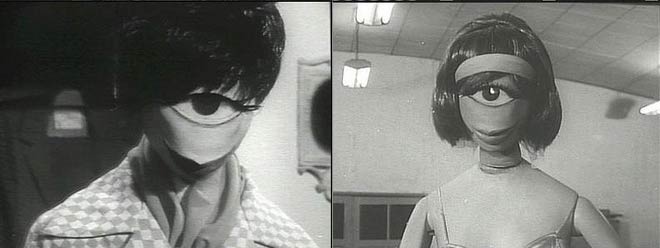
According to a recent study commissioned by the Japanese government, the country’s desire for sex is dropping quickly.
The biennial survey, originally designed to gauge the success of the country’s birth-control education, revealed that 36.1 percent of Japanese males between 16 and 19 had no interest in or even loathed sex. In 2008, that number was 17.5 percent.
Of girls in that 16–19 age group, 59 percent had no interest in sex, up 12 points from 2008.
Forty percent of married people admitted to not having sex within the last month.
Overall, the fertility rate in Japan has dropped to 1.37 births per woman. It’s 2.06 in the U.S. Such a low rate, if it continues, could have major consequences for the Japanese economy.
{ Good Feed | Continue reading }
image { Amazon.com }
asia, economics, relationships, sex-oriented |
February 9th, 2011

The popular perception of the Dark Ages is wrong. That’s the message of Nancy Marie Brown’s “The Abacus and the Cross” (Basic Books), which tells the story of Gerbert of Aurillac (d. 1003), a monk who rose from humble beginnings to become Pope Sylvester II, and came to personify the union between science and religion that was in evidence a thousand years ago. “In his day, the earth was not [believed to be] flat. People were not terrified that the world would end at the stroke of midnight on December 31, 999. Christians did not believe Muslims and Jews were the devil’s spawn. [And] the Church was not anti-science—just the reverse,” writes Brown.
But in today’s world—in which religion and science are seen as being at odds with one another, it’s a challenge to orient oneself to the idea that the Church was a champion of learning. In the following Failure Interview, Brown introduces us to the so-called “Scientist Pope,” and explains why our beliefs about the Dark Ages are misguided.
{ Failure | Continue reading }
photo { Michel Delsol }
flashback, science |
February 9th, 2011

For someone who died at the age of 32 the largely self-taught Indian mathematician Srinivasa Ramanujan left behind an impressive legacy of insights into the theory of numbers—including many claims that he did not support with proof.
One of his more enigmatic statements, made nearly a century ago, about counting the number of ways in which a number can be expressed as a sum, has now helped researchers find unexpected fractal structures in the landscape of counting.
Ramanujan’s statement concerned the deceptively simple concept of partitions—the different ways in which a whole number can be subdivided into smaller numbers. Ken Ono of Emory University and his collaborators have now figured out new ways of counting all possible partitions, and found that the results form fractals—namely, structures in which patterns or shapes repeat identically at multiple different scales.
“The fractal theory we’ve discovered completely answers Ramanujan’s enigmatic statement,” Ono says. The problems his team cracked were seen as holy grails of number theory, and its solutions may have repercussions throughout mathematics.
{ Scientific American | Continue reading }
mathematics |
February 9th, 2011

{ How the U.S. Secret Service pulls off the most complicated security event of the year, from counter-surveillance to counter-assault, hotel booking to event schedule. | The Atlantic | full story | Chart: The Presidential Motorcade }
U.S., pipeline, spy & security, transportation |
February 9th, 2011

He turned Combridge’s corner, still pursued. Jingling hoofthuds. Perfumed bodies, warm, full. All kissed, yielded: In deep summer fields, tangled pressed grass, in trickling hallways of tenements, along sofas, creaking beds.
– Jack, love!
– Darling!
– Kiss me, Reggy!
– My boy!
– Love!
His heart astir he pushed in the door of the Burton restaurant. Stink gripped his trembling breath: pungent meatjuice, slop of greens. See the animals feed.
Men, men, men.
{ James Joyce, Ulysses, 8, 1914-1921 | Continue reading }
photo { William Eggleston, Los Alamos }
James Joyce |
February 8th, 2011

While taking photos has become a way to mark almost any moment, there is often an unnoticed tradeoff. Photography is so easy that the camera threatens to replace the eyeball. Our cameras are so advanced that looking at what you are photographing has become strictly optional.
{ Slate | Continue reading }
photo { Nathaniel Ward }
ideas, photogs |
February 8th, 2011

Feelings of anxiety are normal and even desirable – they are part of what helps us survive in a world of real threats. But no less crucial is the return to normal – the slowing of the heartbeat and relaxation of tension – after the threat has passed. People who have a hard time “turning off” their stress response are candidates for post-traumatic stress syndrome, as well as anorexia, anxiety disorders and depression.
How does the body recover from responding to shock or acute stress? This question is at the heart of research conducted by Dr. Alon Chen of the Institute’s Neurobiology Department.
The response to stress begins in the brain, and Chen concentrates on a family of proteins that play a prominent role in regulating this mechanism. One protein in the family – CRF – is known to initiate a chain of events that occurs when we cope with pressure, and scientists have hypothesized that other members of the family are involved in shutting down that chain.
In research that appeared in the Proceedings of the National Academy of Sciences (PNAS), Chen and his team have now, for the first time, provided sound evidence that three family members known as urocortin 1, 2 and 3 – are responsible for turning off the stress response.
{ EurekAlert | Continue reading }
arwtork { Lucian Freud, Reflection with Two Children (Self-Portrait), 1965 | Freud painted this self-portrait by looking down at his reflection in a mirror placed by his feet; this accounts for the extreme foreshortening, and the halo-like ceiling light just above his left shoulder. The two children are Freud’s daughter and son, Rose and Ali Boyt. Freud said he used a palette knife to describe the space around him, smearing it on and smoothing its surface so that it seems like a strange, grey, voluminous void. | Tate }
brain, psychology, science |
February 8th, 2011

It’s been more than 10 years since it was noticed that certain enzymes – the sirtuins – had life-extending properties in organisms like yeast, and later nematodes, fruit flies, and mice. The excitement spread to other compounds, such as resveratrol, that seemed to activate or assist sirtuins. Hopes were high that such things might offer the known longevity benefits of calorie restriction in a pill form. Ever since then the gold rush has been on to figure out how these things work – and if possible, to be the first to market with the Fountain of Youth in a bottle. (…)
It’s pretty clear from this and many other studies that oxidative damage in cells is a cause of cell death and therefore of various health problems associated with aging. Undoubtedly there are a number of other factors that contribute to aging-related problems, such as cell death due to other causes and weakening or disregulation of the immune system. And even in the case of oxidative damage, there are many ways it can come about, and also many ways it might be inhibited. If you think of aging as a complex disease, like cancer – a point of view that has its detractors – then there are bound to be many causes and contributing factors. And also many ways to inhibit or arrest the process. The example considered here is just one of many.
{ Science and Reason | Continue reading }
painting { Wayne White | Thanks Jared }
science |
February 8th, 2011

Can you take away the feelings of guilt through self harm? Well, here’s one way to find out.
Take 59 Australian students, and split them into three groups. Get two groups to write about something they did that they feel guilty about.
Then get one of those groups to stick their arms into iced water. The other group gets nice warm water. The third group writes about just some everyday interaction, but then they get the ice bath too.
When Brock Bastian, of the University of Queensland, and colleagues did that they found a couple of things. First the students who wrote about about a guilt-ridden experience really did feel more guilty.
Second, these guilt-ridden students kept their arms in the ice bath longer than the guilt-free students. What’s more, their level of guilt dropped more than the guilt-ridden students who had a warm water bath.
{ Epiphenom | Continue reading }
photo { Nikola Tamindzic }
related { Can one have pain and not know it? }
psychology |
February 8th, 2011

Each year for the past two decades, the artificial-intelligence community has convened for the field’s most anticipated and controversial event—a meeting to confer the Loebner Prize on the winner of a competition called the Turing Test. The test is named for the British mathematician Alan Turing, one of the founders of computer science, who in 1950 attempted to answer one of the field’s earliest questions: can machines think? That is, would it ever be possible to construct a computer so sophisticated that it could actually be said to be thinking, to be intelligent, to have a mind? And if indeed there were, someday, such a machine: how would we know?
Instead of debating this question on purely theoretical grounds, Turing proposed an experiment. Several judges each pose questions, via computer terminal, to several pairs of unseen correspondents, one a human “confederate,” the other a computer program, and attempt to discern which is which. The dialogue can range from small talk to trivia questions, from celebrity gossip to heavy-duty philosophy—the whole gamut of human conversation. Turing predicted that by the year 2000, computers would be able to fool 30 percent of human judges after five minutes of conversation, and that as a result, one would “be able to speak of machines thinking without expecting to be contradicted.”
Turing’s prediction has not come to pass; however, at the 2008 contest, the top-scoring computer program missed that mark by just a single vote.
{ The Atlantic | Continue reading }
related { Developed over four years at an estimated cost of more than $30 million, IBM’s “Jeopardy”-playing computer, Watson, will face the quiz show’s grand masters, Ken Jennings and Brad Rutter, in two games to be aired Feb. 14, 15 and 16. Doubts remain about how well Watson can process the endless subtleties of human language. WSJ | full story }
photo { Brian Ulrich }
robots & ai, technology |
February 8th, 2011

The human eye is an amazing piece of machinery. It can distinguish some ten million colours thanks to the remarkable light-sensitive rod and cone cells that populate the back of the eye.
These cells neatly divide up the process of vision. The rods, some 90 million of them, have a peak sensitivity to reddish light and work best in low light, providing our night vision.
The cones, on the other hand, some 5 million of them, come in three types. These are sensitive to long wavelengths (ie red), medium wavelengths (green) and short wavelengths (blue) producing colour vision. They are designated L, M and S cones respectively.
But here’s the puzzle: S cones are rare making up less than 10 per cent of the total. The L and M cones are much more common but their ratio can vary dramatically. People with otherwise normal colour vision can have L:M ratios of between 1:4 and 15:1.
(Other primates have different ratios although the ratio in new world monkeys is similar to ours.)
The question that leaves biologists scratching their heads is why.
One idea is that this distribution of cone cell types is the result of an adaptation to the environment in which the human eye evolved.
So if we can work out what that environment was like, we could get a handle on the forces that shaped our visual system.
{ The Physics arXiv Blog | Continue reading }
eyes, science |
February 8th, 2011

I have only met Arianna Huffington once. I remember it vividly but my guess is she doesn’t remember it much at all, which says volumes about both of us. The scene was surreal. Huffington and I were in Larry Flynt’s office in Los Angeles, participating in an experimental online talk show Larry was trying to distribute over the Internet. Our topic for the moment was gun control: I was conflicted while Huffington was violently opposed to guns, citing their danger to children, which she thought should over-rule any constitutional argument. I made a point and she replied with the motherhood card, “Well you obviously have never had children.” Point and match for Huffington. Game over.
But I had children. Back then I was the father of two sons, one of whom had died in my arms only a few months before. That memory was still too vivid for me to even respond to Huffington, who took my silence as capitulation, and maybe it was. She easily threw her kids into the battle while I couldn’t do the same with mine.
Maybe she sensed my weakness.
That was long before the Huffington Post was even thought of, but it was the first thing that came to mind when I read this week that AOL was buying the blog for $315 million. What AOL is buying, primarily, is Arianna Huffington in her role as media baron (baroness?) in the Fleet Street tradition, and it is a perfect fit. Huffington is at heart a female Rupert Murdoch, she just came to it too late in life. Like Murdoch she is all about taking a position and relentlessly pushing it to attract like-minded readers and advertisers. The story is everything. Well that and the money.
Did I mention that, inspired by Huffington, this blog, too, is for sale? By her metrics it’s worth $20 million, but I’d take a tenth of that.
{ Robert X. Cringely | Continue reading }
related { Barry Ritholtz | AOL-Huffington Post: Why the Heavy Breathing? }
economics, experience, technology |
February 8th, 2011

The problem is that glass breaks before it bends – even the tiniest fracture spreads rapidly in all directions until the entire pane shatters. In engineering terms, glass is strong (it can withstand a lot of stress before cracking) but not tough (it has little damage tolerance after the onset of cracking). This is in contrast to sheets of metal or plastic that can deform to accommodate small defects, making them generally tougher materials.
To a group of researchers at Lawrence Berkeley National Laboratory and Caltech, this begged the question: is it possible to engineer tougher glass by making it behave more like metal? The answer, it turns out, is yes.
{ Berkeley Science Review | Continue reading }
photo { Maserati Quattroporte covered with 1,763 lbs of shattered glass by Luca Pancrazzi }
science, technology |
February 8th, 2011

{ A lamp shade robot, an Auger-Loizeau Carnivorous Domestic Robot Entertainment design, is powered by incoming flies.| Meat-eating furniture | NPR | full story }
technology, visual design |
February 8th, 2011

Crime is bad. So prosecuting criminals is good. Prosecution requires evidence, mainly testimony. So we force witnesses to testify in court, without compensation. Testifying in court might be quite inconvenient for a witness, might subject him or her to retaliation, and might damage her relationships. Yet still we require it. Except:
{ Overcoming Bias | Continue reading }
related { Contact with the criminal justice system may be associated with suicide risk }
photo { Maureen Drennan }
ideas, law |
February 8th, 2011

Culturally, food has become completely internationalized. One of the reasons I write about food is because it reflects history and society and what’s going on. I spend a lot of time in Basque country; it has a great food tradition. Basque dishes, like the beans of Tolosa, came about because of 17th-century trade with Central America. Foods like that last because they came about through a historical process. But a lot of the famous new Basque chefs, their food is odd and curious, foods that could be from anywhere with no cultural underpinnings. So in the long view of history, it won’t have any importance. (…)
The word for salad in Latin is salted, but it’s a misrepresentation — they didn’t sprinkle salt on it, they used a brine dressing.
{ Interview with Mark Kurlansky | Culinate | Continue reading }
The word “salad” comes from the French salade of the same meaning, from the Latin salata (salty), from sal (salt). (Other salt-related words include sauce, salsa, sausage, and salary). In English, the word first appears as “salad” or “sallet” in the 14th century.
{ Wikipedia | Continue reading }
photo { Jessica Craig-Martin }
previously { Paul Krugman, Supply, demand, and English food, 1998 }
Linguistics, food, drinks, restaurants |
February 8th, 2011

Research has demonstrated that more than leaving you feeling rested, sleep actually improves your memory. Even better, a new study suggests that sleep actually helps you remember exactly what you need to remember.
{ ionpsych | Continue reading }
photo { Jill Freedman }
science, sleep |
February 8th, 2011

{ Left: The over orientation. Right: The under orientation. | In surveys of American consumers and of bath and kitchen specialists, 60–70% of respondents prefer over. | Toilet paper orientation | Wikipedia }
guide |
February 8th, 2011

Is there an Oscar curse for women who win the Best Actress award? According to a new study, the answer is a definite yes.
After examining the marital histories of 751 movie stars nominated for Best Actor and Best Actress Oscars between 1936 and 2010, researchers at the University of Toronto’s Rotman School of Management found that women who win Oscars in the Best Actress category faced a much greater risk of divorce than men who win Best Actor awards. (…)
The researchers found that on average, Best Actress winners tended to stay married 4.3 years, while the non-winning nominees’ marriages lasted more than twice as long, 9.5 years.
{ Washington Post | Continue reading }
photo { Greta Garbo photographed by Edward Steichen }
relationships, showbiz |
February 8th, 2011

A giant net several kilometres in size has been built as part of a collaboration between Japan’s space agency and a 100-year-old fishing net company to collect debris from space.
Last year, a US report concluded that space was so littered with debris that a collision between satellites could set off an “uncontrolled chain reaction” capable of destroying the communications network on Earth. It is estimated there are 370,000 pieces of space junk.
The Japanese plan will see a satellite attached to a thin metal net spanning several kilometres launched into space. The net is then detached, and begins to orbit earth, sweeping up space waste in its path.
During its rubbish collecting journey, the net will become charged with electricity and eventually be drawn back towards earth by magnetic fields – before both the net and its contents burn upon entering the atmosphere.
{ Telegraph | Continue reading }
space, technology |
February 7th, 2011






















